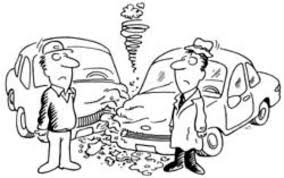My Car Was Damaged in the Accident. What Do I Do?

As car accident lawyers in Nova Scotia, this is a question we hear often. Where someone is injured in an accident, they usually also have a damaged car. The processes for getting insurance compensation for your damaged car differs significantly from the process of negotiating compensation for your injuries. Property damage compensation is much more “user friendly”. Here is a short article that discussed how it happens in Nova Scotia:
The standard auto insurance policy in Nova Scotia has a section dedicated specifically to covering property damage. It’s called “Section C”. While Section C is often part of standard insurance policies, law does not specifically require you to purchase it like Sections A, B, and D of the standard policy. Companies that offer Section C often require a deductible payment to be met before they will pay for costs.
Section C only applies when the accident you are in is your fault. Otherwise, car damage is covered by Section A in your own policy. This was a change made in 2013. Prior to this, compensation would come from insurance company of other driver to cover damage to your vehicle if they were at fault. Sometimes lawsuits would be necessary. This is no longer allowed. Instead, Nova Scotia now has a relatively new process called Direct Compensation for Property Damage, or DCPA, that lets you make a claim on your own insurance under Section A if you weren’t at fault. Both of these processes let you make a claim on the vehicle as well as to the contents of the vehicle (e.g. a damaged laptop), or equipment attached to the vehicle (e.g. sports equipment or a trailer).
Making a claim on Section C or under DCPA is pretty straightforward, but there is one very important “gotcha” that can make a bad situation even worse. If you were under the influence of drugs or alcohol at the time of the accident, or if you allow a driver under the influence use your vehicle, and an accident happens, Section C will no longer apply. This is one of the many hidden punishments of impaired driving.
How The Insurance Company Calculates Vehicle Compensation:
There are two steps. First, a calculation is made regarding how much it will cost to repair the damage or the “actual cash value” of the damaged goods.
The “Actual Cash Value” is the amount of money necessary to replace your vehicle with a comparable used vehicle (The total mileage, age, overall condition and average retail selling price of your vehicle will all be considered in determining its actual cash value plus applicable sales tax.)
You shouldn’t blindly accept the insurance company’s valuation. It’s recommended that you check local classified ads and “auto trader” magazines to find the asking price for similar vehicles. Although these are asking prices, not the selling prices, this should give you an idea as to what your vehicle may be worth. Write down the prices of five vehicles similar to yours and then take the average. If this average is significantly higher than the cash settlement being offered to you by your insurance company, speak to your claims adjuster.
After the price is calculated, the insurance company will decide just how much of the accident was your fault. This is done through a complicated process called the Automobile Insurance Fault Determination Regulations. It’s basically a giant flowchart that insurance companies are required to use to determine how much a person is responsible for an accident. If it is determined that you are 25% at fault, for instance, then they will pay you 75% of the repair costs or actual cash value of the vehicle.
Needless to say, this can lead to some heated debates. On the one hand, the actual cash value of your vehicle may be far less than your car loan or what you think the car is worth due to condition, modifications, etc. On the other hand, you may disagree with the percentage of fault assigned to you in your claim. You could even disagree on both.
If you disagree with your insurance company’s opinion on fault, and believe that the decision does not accurately reflect the circumstances of the accident, speak to the insurance adjuster handling your claim. Ask him or her what section in the Fault Determination Regulations has been applied in your case.
It could be helpful to bring any new information to the attention of your insurance company. Generally, an insurance company will revise or reconsider its decision on fault only if additional, relevant information is provided. For example, if an accident occurred in which each driver stated that the other driver had gone through a red light, an insurance company would have little choice but to assign fifty-fifty fault. However, if an eyewitness confirmed which driver went through the red light, an insurance company could review its decision.
If you strongly disagree with the decision, you may need to file a lawsuit against your own insurance company to dispute their calculations or bring a complaint to the insurance company’s complaint officer If you have injuries, you can also bring a Section A claim and ask for that policy to pay the property damage difference if you’re successful at proving total liability against another driver. However, it’s strongly suggest that you speak with an experienced car accident lawyer before filing lawsuits over property damage. You can land yourself in some trouble for doing this. For instance, you may lose the right to bring later lawsuits for injury compensation by accepting a settlement for Section C or DCPA. You want to tread carefully in this regard and definitely consult with an experienced car accident lawyer.













